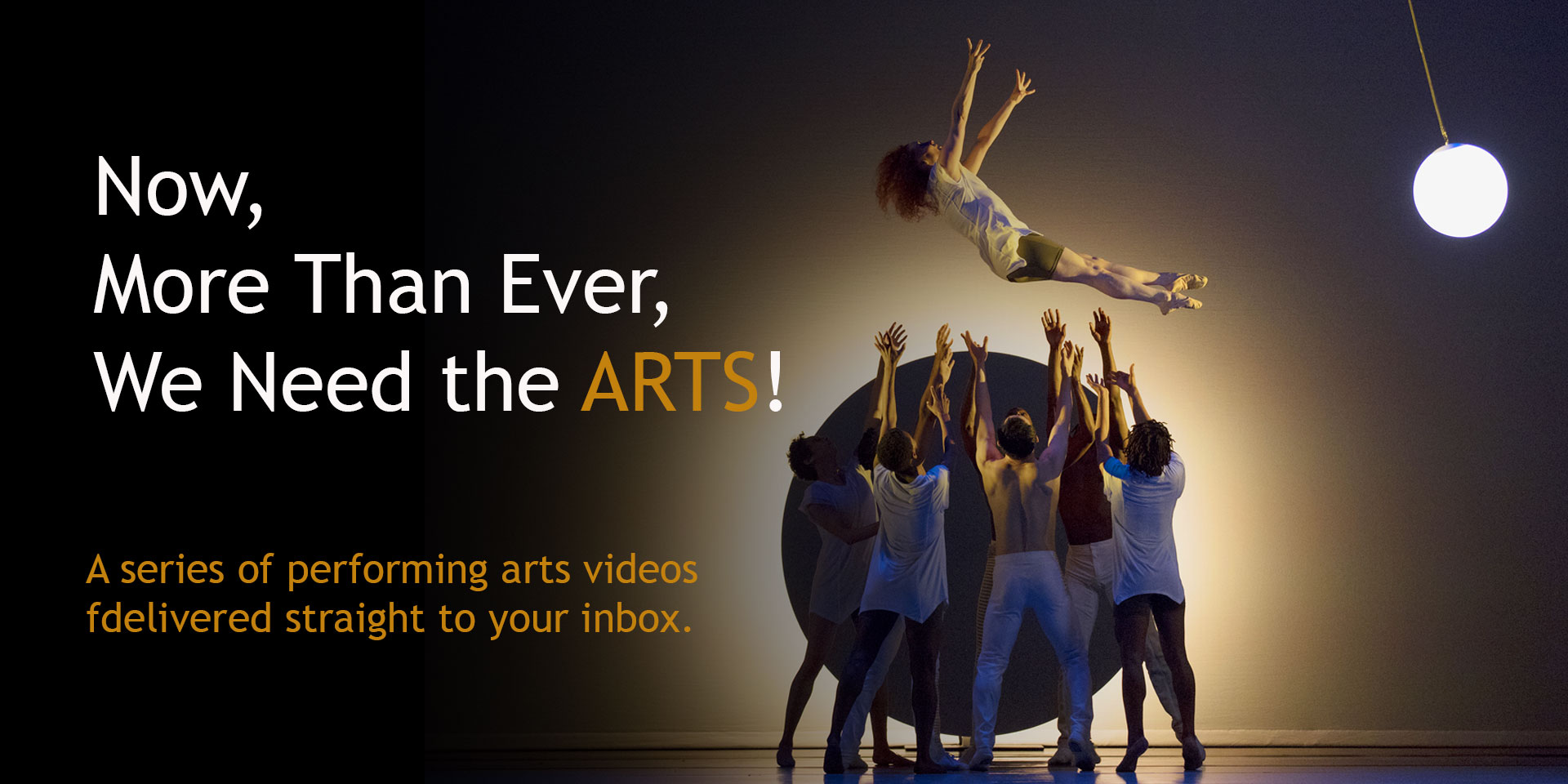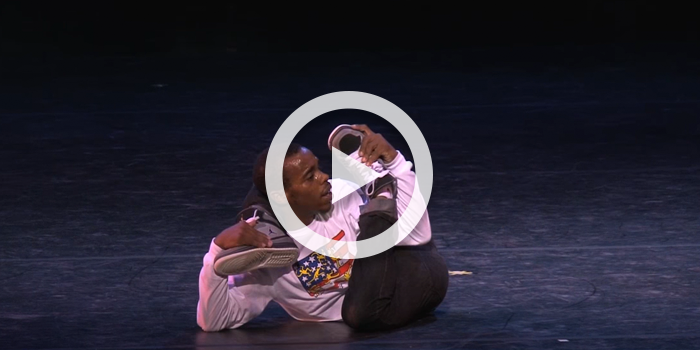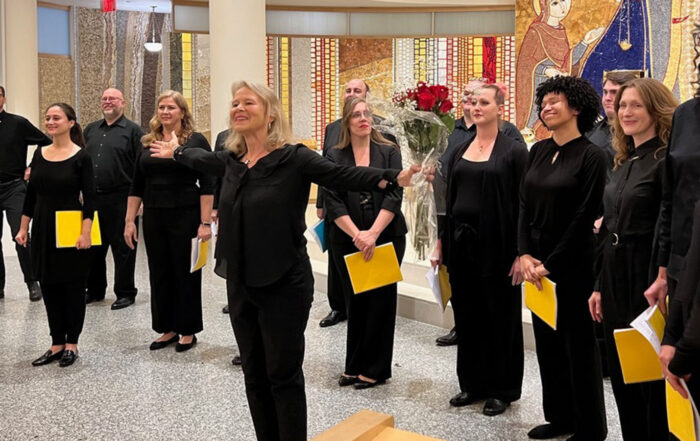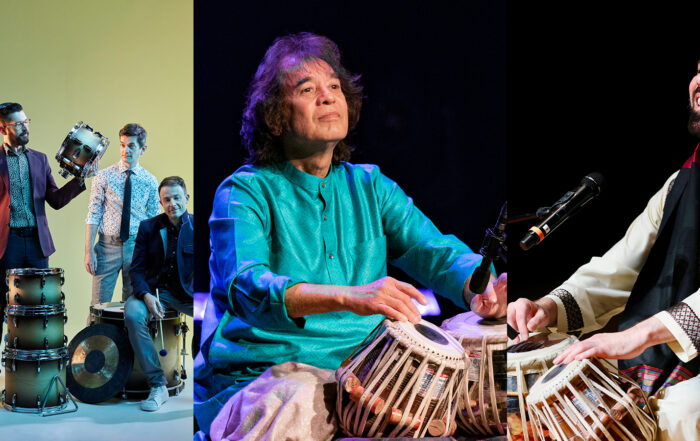In this issue: Sibelius’ Allegro moderato from Violin Concerto in D minor, Op. 47 performed by Camilla Wicks and Stockholm Radio Symphony Orchestra; Miriam Makeba and Jerry Rogovoy’s “Pata Pata” performed by Angélique Kidjo; Pas de deux from Les Sylphides choreographed by Fokine and performed by Maria Tallchief and Royes Fernandez; Rachmaninoff’s Finale from Piano Concerto No. 3 in D minor, Op. 30 performed by Leif Ove Andsnes and Swedish Radio Symphony Orchestra; Puccini’s Finale from Suor Angelica performed by Barbara Frittoli and Metropolitan Opera
Now, More Than Ever: Issue 47
What is it that compels a great artist—a musician, dancer, actor—to lead a public life as a performer?
Of course, there’s the adulation, the satisfaction of being paid (sometimes handsomely) to do the thing you most love and enjoy, the glow of the limelight, the rush of hearing the applause build through the audience and crash like a wave over the edge of the stage.
The brilliant mid-20th-century violinist Camilla Wicks, who passed away last week at the age of 92, said in one of her rare interviews:
“The thrill of concert life all boils down to a single multiple experience—the time one stands, drained of all you have given that evening, on the particular stage—loving the people you have played for… listening to their cries for ‘Encore!’… feeling unworthy of all this and yet knowing something important and great has just happened to you and to the people out there.”
(For more on Camilla Wicks, see also the Sibelius Violin Concerto audio recording discussed below.)
But on the other side of the scales, consider the endless trips through a blurred series of cities you don’t, after all, truly get to visit, the succession of unfamiliar dressing rooms, mediocre room-service dinners, and lonely nights spent in hotel beds rather than at home with the ones you love.
More and more, I hear from my soloist friends—some of whom are represented in today’s Now, More Than Ever—stories of the personal price paid for choosing such a life.
As you watch these extraordinary performances, imagine what might have come afterwards, in the late-night hours that followed.
Sibelius: Allegro moderato from Violin Concerto in D minor, Op. 47
Camilla Wicks, violin
Sixten Ehrling, conductor
Stockholm Radio Symphony Orchestra
(This movement ends at 15:47.)
A recent text from a friend sent me off to read the Washington Post’s November 27 obituary of Camilla Wicks, “a violin prodigy acclaimed as one of the most gifted virtuosos of her generation, only to give up a globe-trotting career in the 1950s to raise her children.”
I remember hearing once about Wicks auditioning privately for the master violinist David Oistrakh; she had expressed her desire to travel to Russia to study with him, a request that was greeted with—and here I’m paraphrasing—the somewhat coded reply, “You know it is very cold in Russia.” (This in the presence of Oistrakh’s official “minder” from the Soviet government, a man put in place to guard against the possible defection of such a cultural “prize.”)
But other than that, I didn’t know much about the violinist.
Wondering why I had never heard more about Wicks, I was happy to have most of my questions answered by the Post’s obituary, which recounts a compelling personal story that is well worth reading, one that includes astonishing early success, a hiatus from performing in the late 1950s that led to the end of her touring career, a new-found focus on family as a divorced mother of five, and a teaching career that took her to Washington State, California, Louisiana, Michigan, Texas, and even (for several years) Norway. Ultimately, Wicks became a faculty member at the Eastman School of Music in Rochester, NY, as well as here in the Bay Area at the San Francisco Conservatory of Music (from which she retired in 2005).
Camilla Wicks was particularly renowned for her performances of Sibelius’ glorious Violin Concerto, earning the admiration and praise of the composer himself, and listening to her historic 1952 recording, one can understand why. (In general I prefer to highlight performances that include actual video footage, but the audio of this selection is so intense and personal, one feels it could ignite at any moment.)
The legendary Isaac Stern once called Wicks “the greatest violinist.” When asked if he meant “the greatest female violinist,” he answered, “No, I mean the greatest.” I hope she found the peace and joy she sought when she opted to cut short her career at such a young age—was hers an “either/or” choice, something that today might have been “both/and”?—and am grateful for the brilliant, life-affirming recordings she left behind.
Miriam Makeba and Jerry Rogovoy: “Pata Pata”
Angélique Kidjo, vocals
Of all the artists on today’s list, the one perhaps most difficult to imagine waiting in her hotel for midnight room service is the volcano of energy otherwise known as Angélique Kidjo. Yes, she’s very much a detailed and thoughtful artist and an impeccable vocalist, but she’s also an instinctive, incendiary dancer with the energy of a dozen other performers. Here she absolutely loses herself within “Pata Pata,” the great Afro-Pop dance song that put South African singer Miriam Makeba, Kidjo’s mentor and great friend, on the map.
Every Friday and Saturday night,
It’s Pata Pata time!
The dance keeps going all night long,
Til’ the morning sun begins to shine!
Pas de deux from Les Sylphides
Choreography by Fokine
Music by Chopin
Maria Tallchief and Royes Fernandez, dancers
We haven’t had a moment yet for Maria Tallchief, a member of the Osage Nation and the first Native American to achieve fame on the international ballet stage (with Balanchine’s New York City Ballet and as the first American to appear with the Bolshoi Ballet in Russia). So I was pleased to find this clip from 1957, among the earliest known video documents of her artistry. Following her death in 2013, the American ballet dancer and choreographer Jacques d’Amboise compared Tallchief to two of the century’s greatest dance artists: the Soviet Union’s Galina Ulanova and Britain’s Margot Fonteyn. In the New York Times obituary, d’Amboise praised the great ballerina, saying, “When you thought of Russian ballet, it was Ulanova. With English ballet, it was Fonteyn. For American ballet, it was Tallchief. She was grand in the grandest way.”
Rachmaninoff: Finale from Piano Concerto No. 3 in D minor, Op. 30
Leif Ove Andsnes, piano
Swedish Radio Symphony Orchestra
Lionel Bringuier, conductor
(If this video doesn’t begin at 28:22, please reset it.)
It can be tempting to dismiss a composer like Rachmaninoff, his music (particularly the piano concertos) performed so often with such overt virtuosity (seemingly for its own sake), but what helped me get over this feeling was watching performances and hearing recordings by the superb Norwegian pianist Leif Ove Andsnes. There’s something so honest, direct, even aristocratic to his approach; the playing is unfussy in the best possible way, with no sense whatsoever that he’s forcing the issue. When you hear this music played with such apparent physical ease, you realize how truly incredible it is.
While Andsnes loves making music, he can be less than enamored with the trappings that generally accompany the life of an international, jet-setting soloist. That he plays with such seeming physical ease, such a sense of relaxation at the keyboard, is something of a wonder.
I’m absolutely delighted that Andsnes will make his streaming debut with us this week (Thursday, December 3, at 7pm), performing music by Mozart, Beethoven, Janáček, and Dvořák for Cal Performances at Home. (The recital, filmed in the artist’s hometown of Bergen, Norway, will remain online for viewing through January 3.)
Puccini: Finale from Suor Angelica
Barbara Frittoli, soprano
James Levine, conductor
Metropolitan Opera
(If this video doesn’t begin at 2:03, please reset it.)
I won’t be offended if you mock me for this one. The final moments of Puccini’s Suor Angelica—here conducted by James Levine and starring the affecting Italian soprano Barbara Frittoli—are so shameless in their emotional manipulation that you can feel like a bit of a sap when they sweep you away (particularly in this somewhat over-the-top Jack O’Brien production, which leaves nothing to the imagination). “Hokey?” asked the New York Times’ Anthony Tommasini. “Not the way Mr. Levine drew shimmering delicacies from the orchestra as the offstage chorus sang Puccini’s wistfully angelic harmonies.”
I remember Frittoli telling me once about how wrenching this role was for her. At the time of this performance, the soprano’s daughter Ariana was around the same age as Sister Angelica’s dead, illegitimate son. The idea of first having to give up her child and then losing that child to death was utterly devastating to the singer. (Just watch as her anguish mounts in these final minutes of the opera; you actually begin to fear for her sanity.)
It might sound like an overstatement, but personal connections like this make all the difference, both for a performer and for the audience that senses the artist’s deep commitment. And that kind of connection comes at a real price. Imagine singing such a role—and emerging emotionally devastated from the experience—only to find yourself hustled off to the Green Room to greet well-wishers. That kind of artistic whiplash creates its own terrible type of dissonance.
Now, More Than Ever Full Playlist
Now, More Than Ever Spotify Playlist








